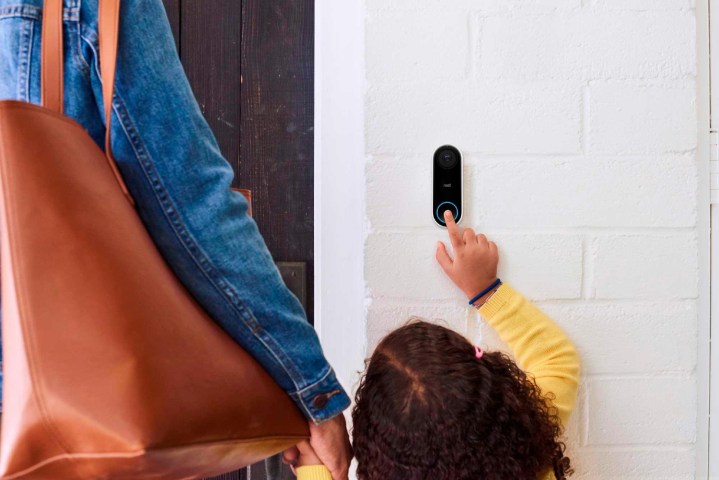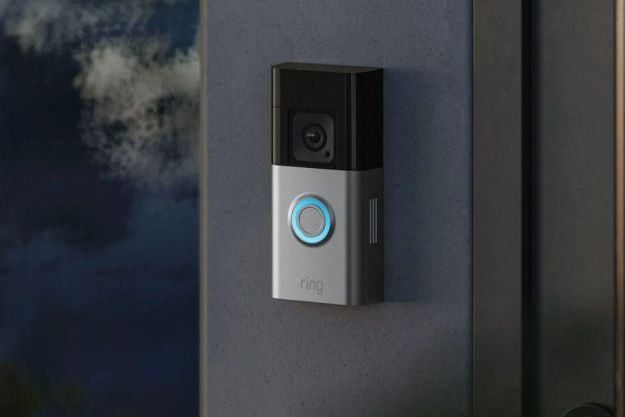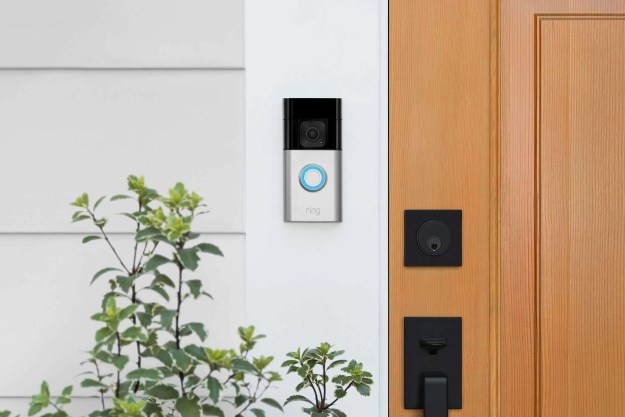Google has introduced a new video doorbell, the Nest Doorbell (2021) model, for those who prefer to combine a front porch security cam with an intelligent doorbell that can send notifications to phone, including video clips of what’s happening.
However, Google also released another video doorbell in 2018, the Nest Hello. If you want to find out which is best for your home, we’re comparing the two to show you all the key differences and which we recommend.
Note: Google has officially rebranded the Nest Hello as the Nest Doorbell (wired) version. To keep things clear for our comparison, we’re going to keep calling it the Nest Hello throughout our guide, but when the time comes to buy, it’s important to remember the change.

Design
At a glance, the two versions of the Nest Doorbell are very similar. There’s a reason that Google chose to rename the old Nest Hello as the new Nest Doorbell (wired), and they’re clear in the same family of Nest video doorbells. However, there are a couple of significant design differences.
First, the Nest Doorbell has a smoother, less obtrusive faceplate that comes in a variety of mellow shades (Snow, Linen, Ivy, and Ash) to make it easier to match your doorframe and surrounding colors. Second, the Nest Doorbell is significantly larger than the Nest Hello — while the Hello is 4.6 inches high, the Nest Doorbell is 6.3 inches and significantly heavier to accommodate the battery. You’ll certainly need more space if you’re interested in the battery model, which offers a bit more versatility with its placement because it’s battery-operated and doesn’t require a wired connection.
Camera
The camera has also undergone some significant changes for the battery-powered Nest Doorbell. While the Nest Hello cam offered a 1600 x 1200 HD video resolution at 30 frames per second, the Nest Doorbell drops that down to 960 x 1280. The camera lens itself took a similar hit, dropping from 3 megapixels to 1.3MP. The field of view was also shortened from 160 degrees (diagonal) to 145 degrees, although Google says the aspect ratio has been improved to help get a better up-and-down look at people standing in front of the door. Night vision is included on both cams.
So, the camera is significantly downgraded from the Hello to the Doorbell (2021) but is now more focused on capturing porch-related activity rather than broader action. This is due to the fact that processing is done on-device with the Nest Doorbell (2021), which also offers more privacy and improved intelligent alerts. The reduced specs also allow the Nest Doorbell (2021) to be less expensive than the wired version (more on that below).

Sensors
The Nest Hello is equipped with an ambient light sensor, which measures the amount of light in an area and tracks its changes. The Nest Doorbell (2021) mixes things up by using a passive infrared sensor (PIR) instead and adds a new magnetometer as well. This indicates that the Nest Doorbell is the more accurate of the two when it comes to sensing nearby activity. Google specifically doesn’t use motion detectors to help decrease false positives and unnecessary alerts.
Battery
While there are other important changes, nothing is quite so different between the two Nest models as the battery. The Nest Hello is a wired doorbell with no battery option, while the Nest Doorbell (2021) is the battery-powered option that does not need to be wired-in to work.
The advantages of a battery-powered doorbell are clear during installation. You can place the doorbell wherever you want to ensure you get the best positioning and angle for the video cam and overcome any problems with angles, height, etc. This makes a video doorbell possible on many front doors where it would otherwise be impractical (and you can add an AC adapter to the Nest Doorbell if you prefer).
The trade-off is that you have to manage the battery. According to Google, this battery typically lasts 2.5 months — that’s 13 to 16 recording events per day, although usage will determine specific battery times. The battery is rechargeable, so you don’t have to replace it frequently, although some downtime should be allowed for recharging.

Smart features
The Google Nest Doorbell is used with the Google Home app, while the Nest Hello works with the Nest app. Through their respective apps, users will receive alerts about activity (and the associated recordings) to users no matter where they are. Using the apps, owners can adjust all kinds of features, including time between recorded events, video quality, length of clips, and more. They also both allow users to adjust activity zones for more accurate alerts and to focus on specific things like packages, etc.
The big difference here is that the Nest Doorbell (2021) is a bit smarter when it comes to customized alerts. The technology in the doorbell is smart enough to guess the difference between seeing a person, a delivered package, an animal, a car, and so on. When you get an alert for a video clip, you can see what it’s probably about.
The Google Nest Doorbell has one distinct advantage: it offers three hours of event history, free of charge. You can subscribe to Nest Aware, which is a plan that greatly extends how much footage can be saved and adds features like Familiar Face Detection, and this plan is the same for both devices.
Price and availability
The Nest Hello is available now from Google and other sellers for $229.
The Nest Doorbell (2021) is available for preorder from Google for $179.99.
The battery version of the doorbell is significantly less expensive, allowing you to save money if you prefer — at the cost of a downgraded camera. It is possible to find discounts on the Nest Hello that drop the price lower if you really want the extra resolution.
Conclusion: Battery-based doorbells are generally more useful
The Nest Doorbell (2021) isn’t just the newer device; it’s also far more versatile for installation, which is a key factor for video doorbells. The lower cost also helps make it a good pick for most interested buyers! The Nest Hello’s primary benefit is a better camera, but this isn’t as important with the limited scope of a video doorbell.
Editors' Recommendations
- How to save Ring Doorbell video without a subscription
- Best security camera deals: Ring, Arlo, Blink and more on sale
- Blink Mini 2 vs. Nest Cam (Indoor): Which is the better affordable security camera?
- How to use the Google Home app on a computer
- The best smart light switch for Alexa, Google Home, and HomeKit



